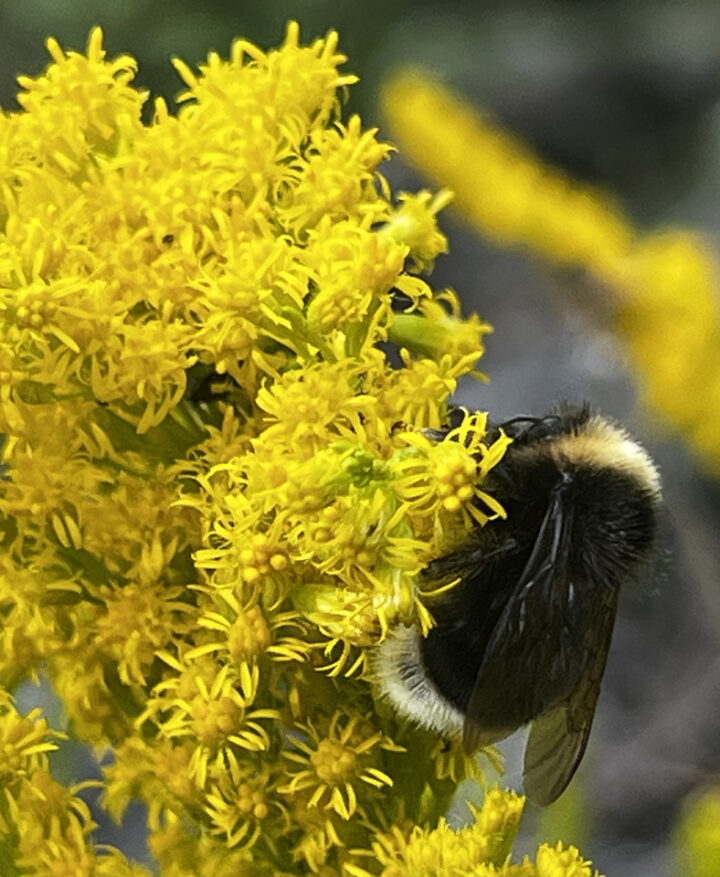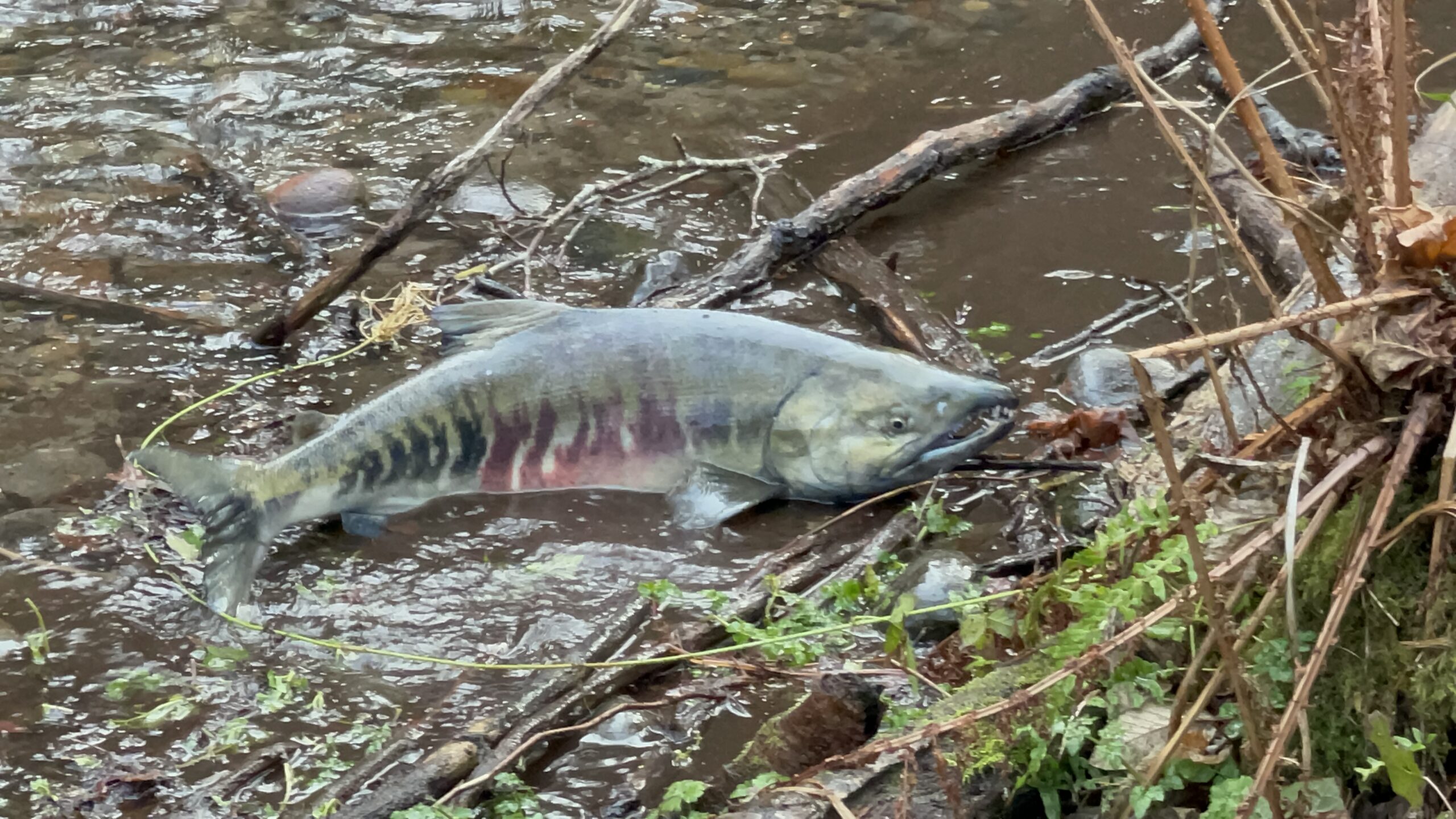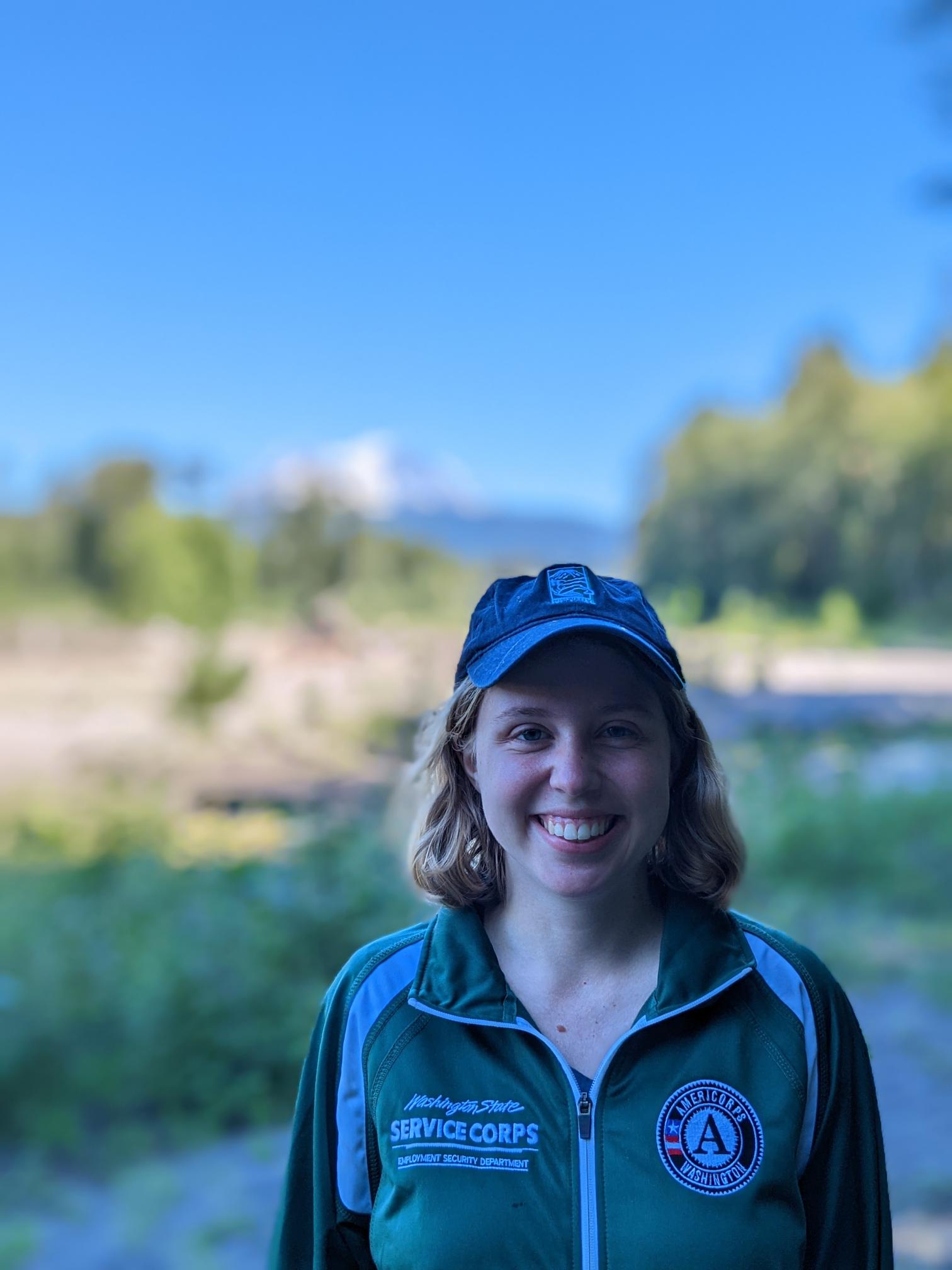Species Spotlight: Western Skunk Cabbage (Elgaria coerulea)
This month, we cast the Species Spotlight on Western Skunk Cabbage!

Western Skunk Cabbage, also called Swamp Lantern, is recognized by its bright yellow spathe and flower-covered spadix. If you’ve encountered one in the watershed, you know where the name comes from! The odor is a deterrent to humans but loved by pollinators.
While out exploring Land Trust properties, our Stewardship Team noticed a striking sight- bright yellow and green skunk cabbage pushing up through the snow. One of the earliest to bloom in the spring, this pungent native pollinator plant is a sign that winter will soon be behind us, and warmer days are ahead.
Description
Western skunk cabbage, also called Swamp Lantern, is often recognized by its bright yellow spathe and flower-covered spadix. It has been known to grow up to 5’ tall and 2’ wide with the largest leaves of any native plant in the region. If you have encountered Western skunk cabbage in a wetland, you know the name comes from its foul odor. This is emitted from the spadix, although the leaves can produce a similar odor when crushed.
While the scent is a deterrent for humans, pollinators are attracted to the plant for this very reason. Its primary pollinators include scavenging flies and beetles, particularly a tiny species of rove beetle.
Western skunk cabbage can be easily differentiated from the Eastern variant, which is typically dark purple. Additionally, Eastern skunk cabbage, like many other plants of the Araceae family, generates heat metabolically. Although it is a common misconception, Western skunk cabbage does not generate its own heat.
Habitat
In recent years, Western skunk cabbage has gained attention throughout parts of northern Europe as a highly invasive plant. It was introduced to the region in the early 1900s as an ornamental plant popular among gardeners. It has since spread into the local ecosystem, blocking drainage channels in parts of Britain and adversely impacting their woodlands.
In the Pacific Northwest, however, this is an important native plant that supports the health and proper functioning of stream habitats and forested wetlands. Beyond providing important resources to pollinators, it is a food source for various wildlife species, which consume the stem and seeds. Amphibians and insects take shelter under its large leaves, and its decaying foliage provides important nutrients to the soil.
Although Western skunk cabbage is not listed as endangered, a habitat in which it is one of three characteristic species is currently listed as imperiled. The Land Trust’s work to restore and protect stream and wetland habitats ensures that skunk cabbage, among other plants, can thrive in a healthy environment.
Ethnobotany
Skunk cabbage is moderately toxic and is not recommended for human consumption, as it contains crystalline shards of calcium oxalate. It has, however, been used medicinally through careful preparation to treat coughs, headaches, and respiratory ailments. It is also a great addition to Pacific Northwest gardens, helping to deter common pests like squirrels and raccoons.
As you venture out this spring, look for the bright yellow spathe pushing up through wet areas. You may just get to see (or smell) this beautiful native plant waking up, announcing spring is here!









































 The accomplishments of all our volunteers are incredibly motivating. It’s so satisfying to look back at the rows and rows of plants that are in the ground at the end of the work party and announce that this morning, we’ve planted hundreds.
The accomplishments of all our volunteers are incredibly motivating. It’s so satisfying to look back at the rows and rows of plants that are in the ground at the end of the work party and announce that this morning, we’ve planted hundreds.